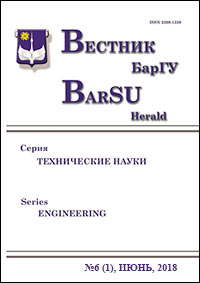METROLOGICAL ASSURANCE OF CONTROL OF CYLINDER LINERSIN THE REPAIR OF DIESEL ENGINES
Keywords:
accuracy; tolerance; measurement error; selective Assembly; cylinder liner; incorrectly rejected and incorrectly accepted productsAbstract
The paper considers that the measurement error with a certain scattering is superimposed on the scattering zone of controlled dimensions and the probability of errors is formed when deciding on the suitability of the product. Con-trolled dimensions of the part that are closer to the limits of tolerance fields fall under the influence of scattering su-perposition. This factor is especially important when splitting parts into selection groups, where the control is carried out not at the edges of the area of dispersion of the product dimensions, and its sectors, and the errors of the first and second kind are large enough. It is proved that when choosing a measuring instrument for quality control of cylinder liners processing in the conditions of single, small-scale and repair production, the most accurate of the offered nomenclature of universal measuring instruments of linear dimensions should be used. In this example this is — caliper indicator with a scale division of the device reading 0.001 mm for the conditions of the settings on the installation the rings, the measurement error will be smallest. Reducing the error of measuring instruments leads to a significant reduction in the number of incorrectly accepted into the group and incorrectly left the group or rejected parts, which, in turn, affects not only the quality of the subsequent Assembly of the compound, but also on the economy of the enterprise.
Table 2. Fig. 2. Ref.: 14 titles.
Downloads
Published
Issue
Section
License
Copyright (c) 2023 Вестник БарГУ Серия "Технические науки"
Это произведение доступно по лицензии Creative Commons «Attribution-NonCommercial» («Атрибуция — Некоммерческое использование») 4.0 Всемирная.
Авторы сохраняют за собой право заключать определенные договорные соглашения, касающиеся неисключительного распространения опубликованной версии работы (например, размещать ее в институциональном репозитории, публикация в книге) со ссылкой на ее первоначальную публикацию в этом журнале.





